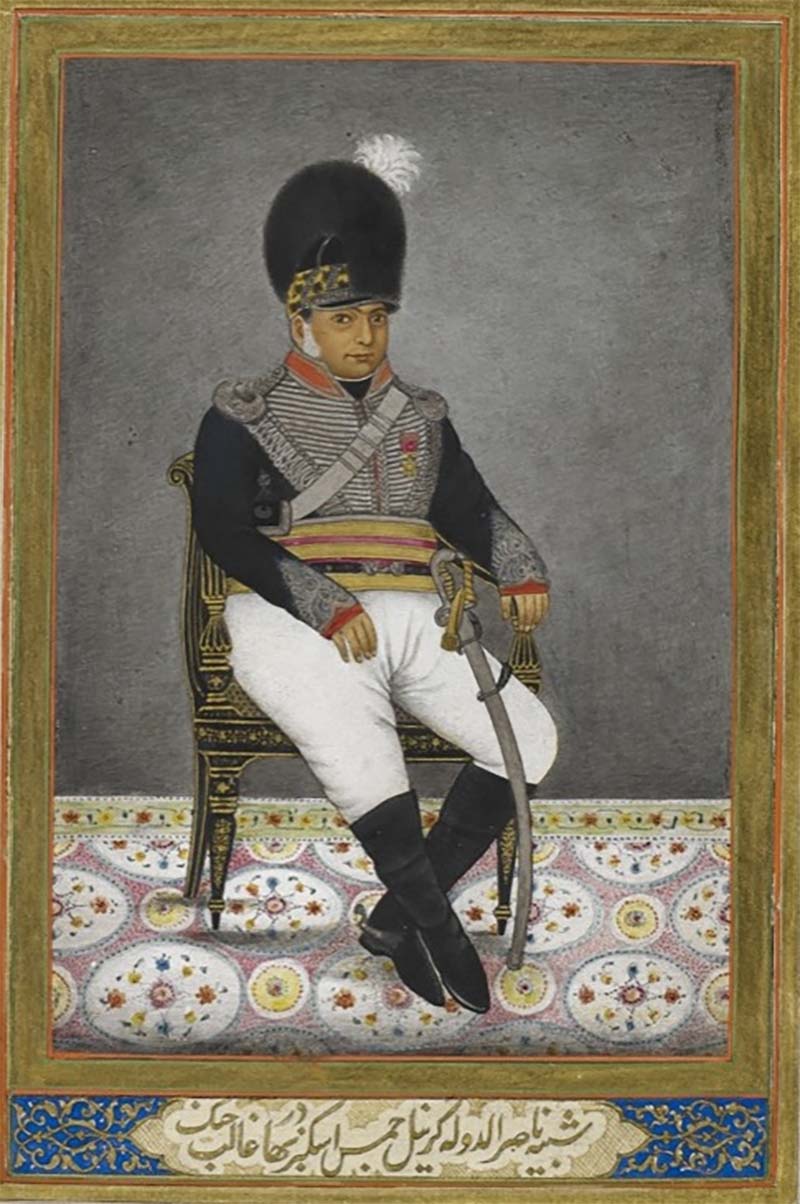A soldier and leading patron of Delhi artists in the nineteenth century, James Skinner is known for his authorship of several books, notably the Kitab-i tashrih al-aqvam (“History of the origin and distinguishing marks of the different castes of India”), as well as raising the cavalry regiment known as Skinner’s Horse.
Skinner was born to a Scottish father and a Rajput mother in Calcutta (now Kolkata). His mixed ethnicity prevented him from becoming a confirmed officer under the British crown, and he began his career as a mercenary in the Maratha cavalry, later joining the Irregular Cavalry Corps, which served the British Army when needed. When William Fraser was appointed the Commissioner of Delhi, Skinner was given the responsibility of establishing his cavalry on the outskirts of Hansi, Haryana. Around the same period, in the early 1820s, Skinner began absorbing the painters working for Fraser into his own circle.
Skinner was fluent in Persian and wrote two books — Kitab-i tashrih al-aqvam (1825), which contained 120 paintings and is currently in the collection of the British Library, and Tazkirat al-Umara (“Biographies of the Nobles”) (1830), which featured thirty-eight paintings. While the former is a taxonomic and ethnographic record of castes in India, accompanied by individual and descriptive portraits of the subjects, the latter presents the history of royal families of Haryana, Punjab and Rajasthan.
From 1825 to 1828, he commissioned Ghulam Ali Khan to paint a number of images, notably three watercolours: one portraying his cavalry regiment at Hansi in 1827–28 and the other two depicting his newly built St James Church in Delhi in 1836. These paintings served the purpose of both documentation as well as positioning Skinner as a land-owning noble and an elite military officer in Delhi society.
Skinner was made lieutenant-colonel (1828), and later, a colonel within the British army. He died in 1841 in Hansi.







